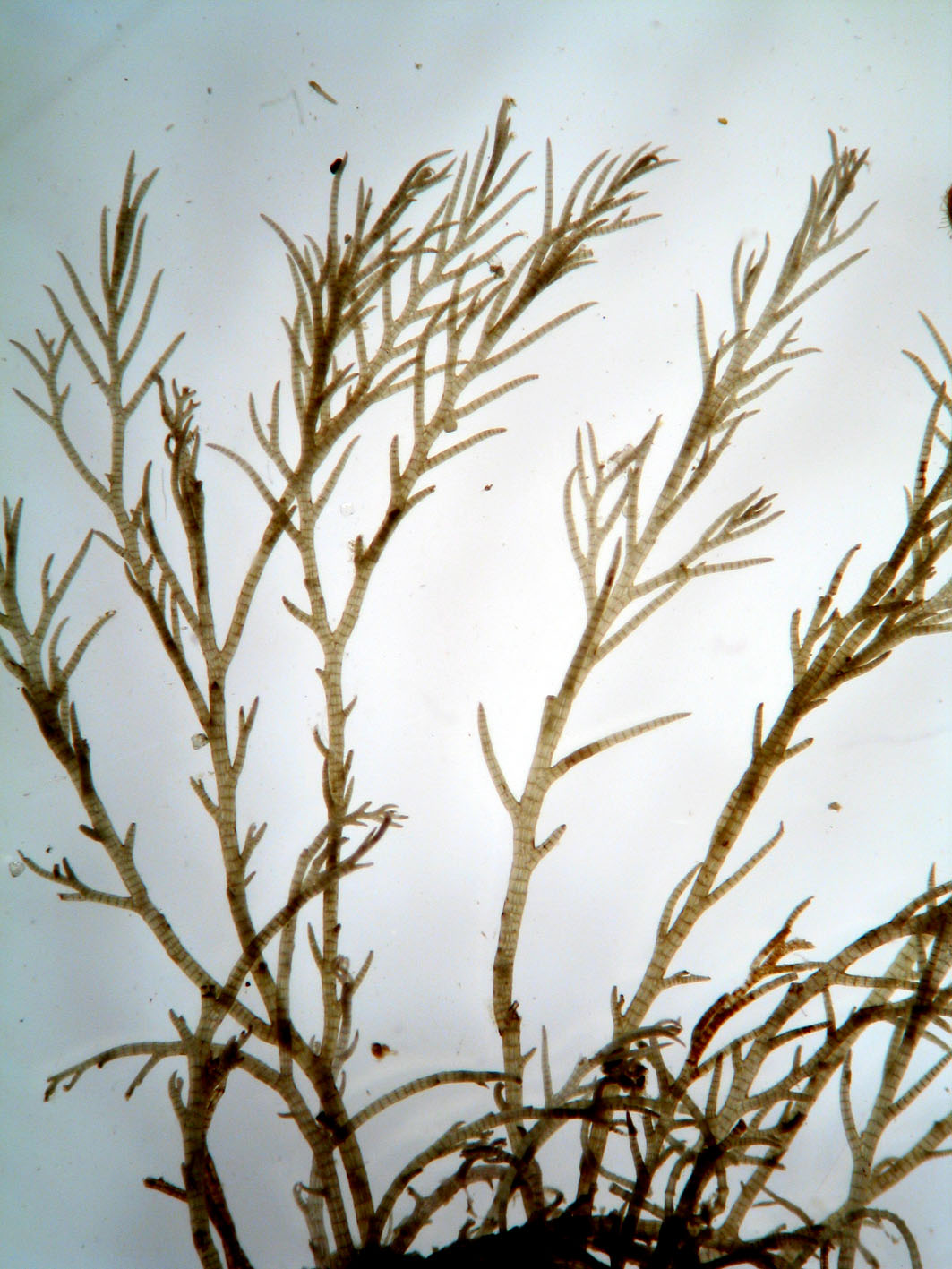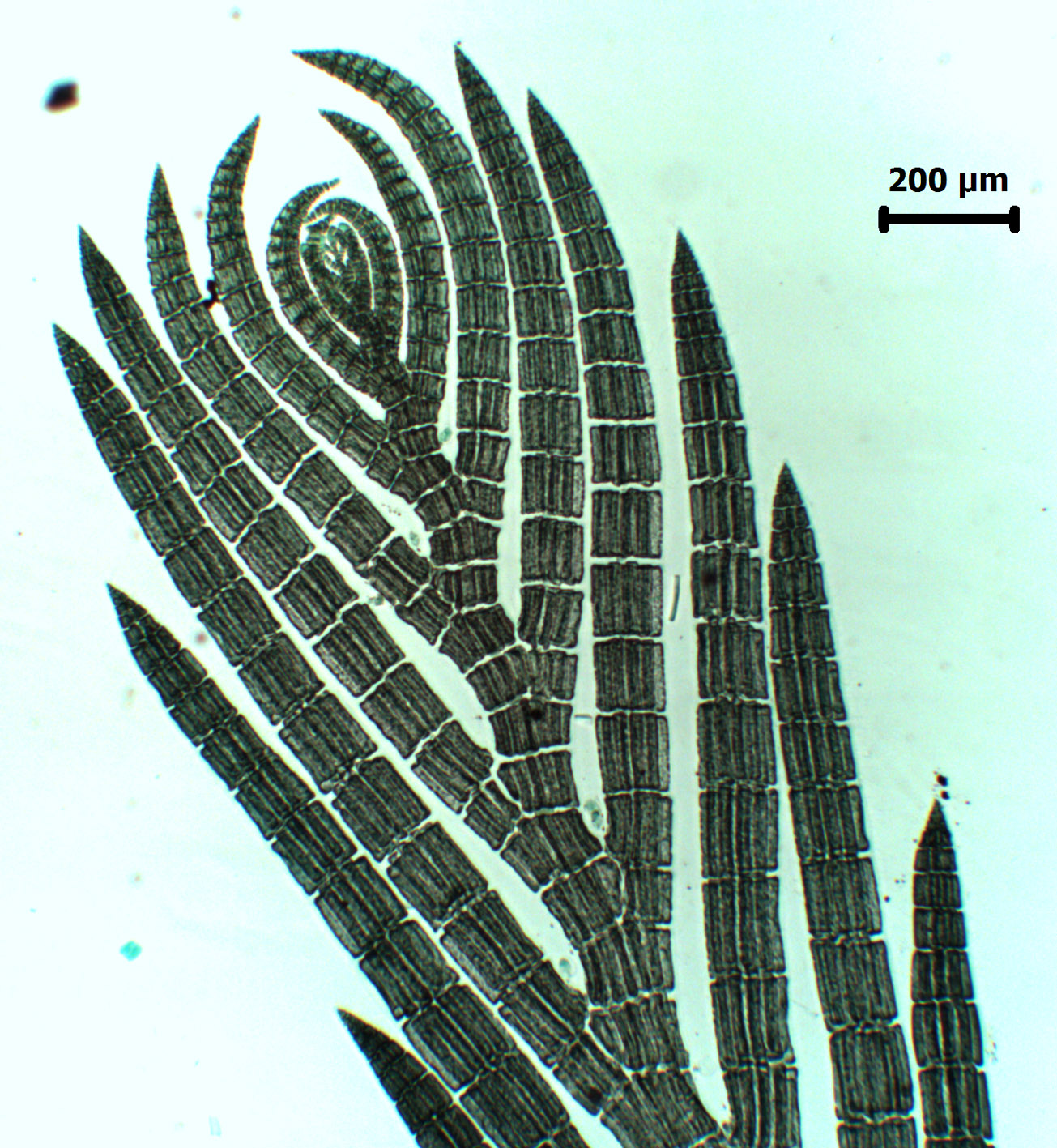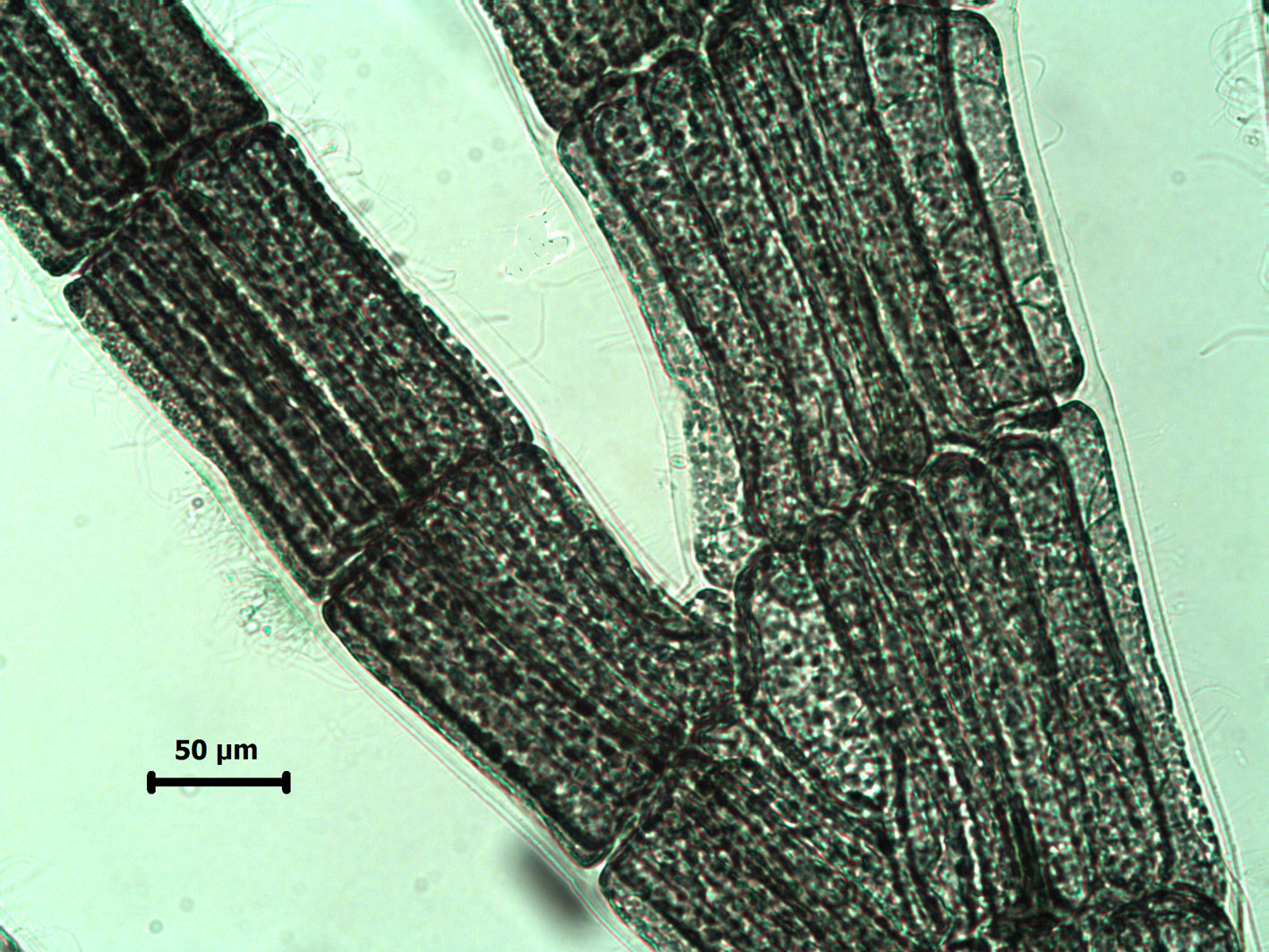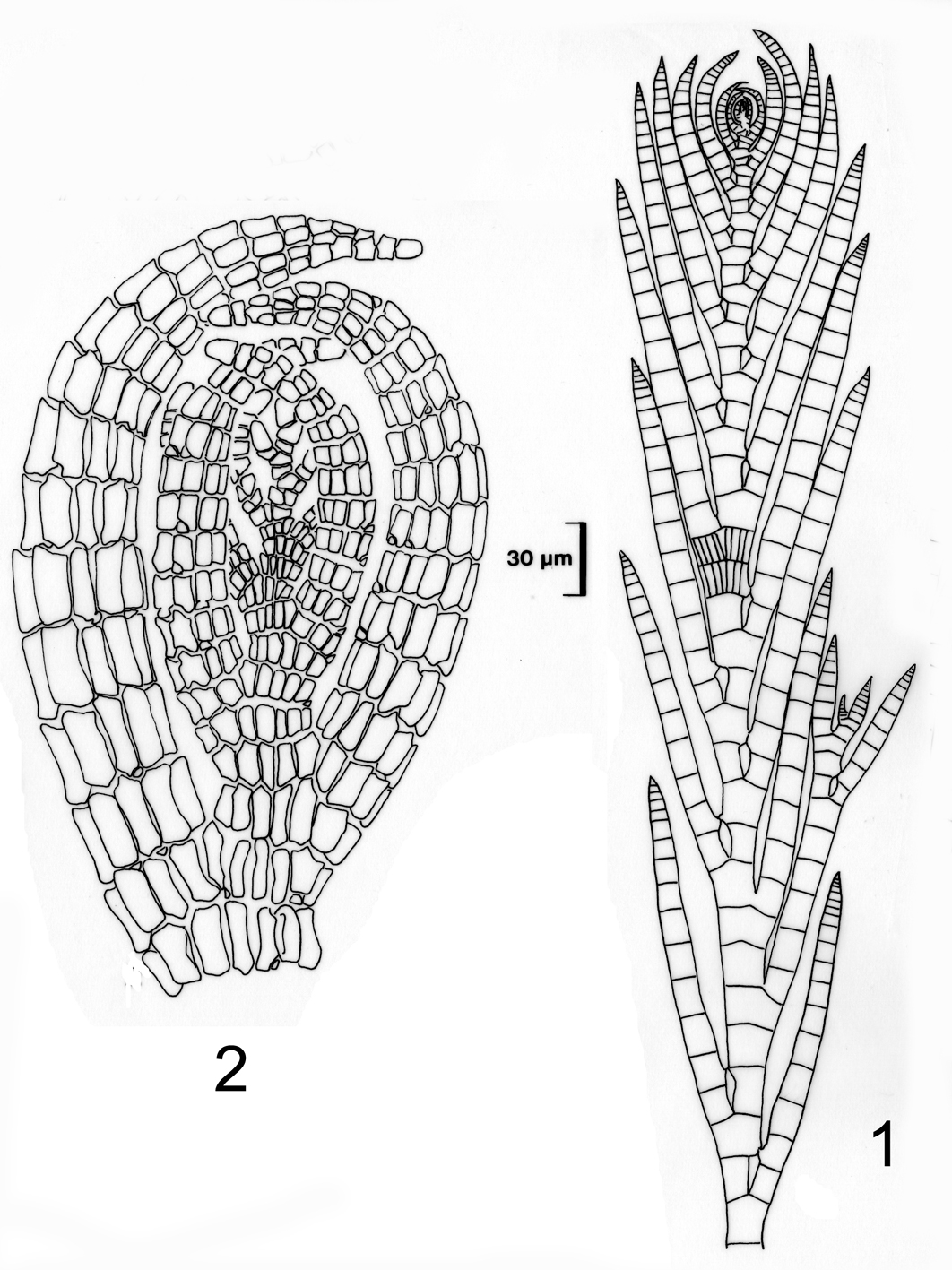Seaweeds of the South African South Coast


Order Ceramiales
Family Rhodomelaceae
Pterosiphonia spinifera (Kützing) Ardré 1967: 37, 41, pl. III: fig. 3
Plants dark red to blackish, comprising terete filamentous prostrate and erect axes, erect axes up to 2 cm tall, (mostly once-) pinnately branched; laterals alternate, arising from every second segment, most laterals simple, determinate, incurved when young, with an acute apex; indeterminate laterals infrequent. Main axes 200 - 250 µm in diameter; main axis and laterals confluent for one segment only. Segments with 8-10 (-16) pericentral cells, uncorticated, segments about as long as broad. Elongated, slightly transparent cells visible in nodes of branches. Reproductive structures not seen in our material.
Collections ecology and regional distribution
Recorded from one subtidal site near Cape Hangklip in the Western Cape (Jackelman et al. 1991) to northern KwaZulu-Natal (19-58). Apparently occurs in the lower eulittoral and shallow sublittoral zones.
World distribution: Peru, Brazil, France, Spain (Guiry & Guiry 2011)
Type locality: Peru (Silva et al. 1996).
Note: There is some variation in the number of pericentral cells in South African specimens: 8-10 were recorded by Stegenga et al (1997) in a west coast (Cape Hangklip) specimen, 10-12 by Norris and Aken (1985) in Kwazulu-Natal specimens, and a specimen (BOL 14989) from Dome Bluff, Transkei, has up to 16 pericentral cells. In other respects these specimens appear very similar, even to the single semi-transparent cell lying below the node of each branch, which Norris and Aken noted in the Kwazulu-Natal plants. They also illustrate rows of single tetrasporangia, about 40 µm in size.

Pterosiphonia spinifera Port Alfred.

Pterosiphonia spinifera, cell detail (Hangklip, Western Cape).

Pterosiphonia spinifera, cell detail and semi-transparent nodal cell (Hangklip, Western Cape).

Pterosiphonia spinifera . 1. Erect axis. 2. Thallus apex. Reproduced from Stegenga et al. (1997).
References Pterosiphonia spinifera
Ardré, F. 1967. Remarques sur la structure des Pterosiphonia (Rhodomélacées, Céramiales) et leurs rapports systématiques avec les Polysiphonia. Revue Algologique, Nouvelle Serie 9: 37-77, VI plates.
Guiry, M.D. & Guiry, G.M. 2011. AlgaeBase. World-wide electronic publication, National University of Ireland, Galway. http://www.algaebase.org; searched August 2011.
Jackelmann, J.J., Stegenga, H.S. & Bolton, J.J. 1991. The marine benthic flora of the Cape Hangklip area and its phytogeographical affinities. South African Journal of Botany 57: 295-304, 4 figs, 1 table.
Norris, R.E. & Aken, M.E. 1985. Marine benthic algae new to South Africa. South African Journal of Botany 51: 55-65, 31 figs, 2 tables.
Silva, P.C., Basson, P.W. & Moe, R.L. 1996. Catalogue of the benthic marine algae of the Indian Ocean. University of California Publications in Botany 79: 1-1259.
Stegenga, H., Bolton, J.J. & R. J. Anderson. 1997. Seaweeds of the South African west coast. Contributions from the Bolus Herbarium 18: 655 pp.
Suhr, J.N. von 1834. Übersicht der algen, welche von Hrn. Ecklon an der südafrikanischen küste gefunden worden sind. Flora 17: 721-735, 737-743, Figs. 1-21, Plates I, II.
Cite this record as:
Anderson RJ, Stegenga H, Bolton JJ. 2016. Seaweeds of the South African South Coast.
World Wide Web electronic publication, University of Cape Town, http://southafrseaweeds.uct.ac.za; Accessed on 07 January 2026.